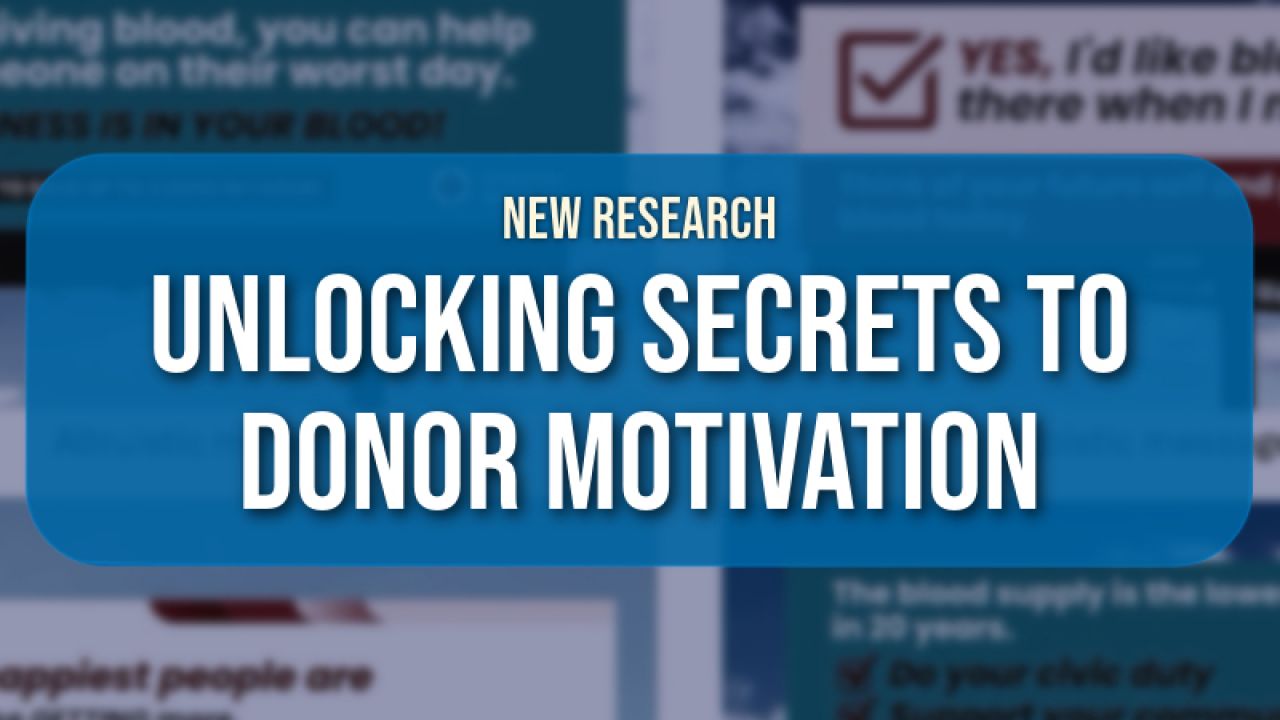February 25, 2025
How nonprofits can inspire blood and organ donations

It is a challenge for nonprofit health organizations to recruit and keep regular donors, and that challenge becomes even more complex when the behavior involved goes beyond donating money or time.
For nonprofits that are trying to get people to donate blood or to sign up for post-mortem organ donation, potential donors face a different set of questions, such as: Will this donation affect my own health? Or what will happen to me after I die? Both of these questions may cause people to squirm. We wondered: what makes people get past those questions and sign up to give blood or donate their organs anyway?
To conduct this study, we recruited people who either donated blood or registered as organ donors to find out what motivated their decisions to engage in those prosocial behaviors. We grouped their motivations into four groups:
- Altruistic motivation (e.g., I care about helping others)
- Egoistic motivation (e.g., I want something or higher status in return)
- Intrinsic motivation (e.g., I enjoy it)
- Collective motivation (e.g., It’s the right thing for the good of the whole)
With those motivation groupings as a guide, we designed sample billboard advertisements about blood donation or organ registry with each message tapping into one of the motivational groupings (See Figure 1 for examples).
People participating in the study saw one type of message and then answered questions about whether they felt motivated by the billboards and whether they would do the behavior that the billboards advertised (donate blood or register as an organ donor).
Figure 1. Sample billboard messages we tested.

To boil it all down, we discovered that for blood donation, billboards with egoistic messages inspired people to be more likely to say they would donate (both for previous donors and people who hadn’t donated before). For people who were not already signed up to be organ donors, messages that were based on altruism were the most persuasive.
We recommend that nonprofits promoting prosocial health behaviors (e.g., American Red Cross, Donate Life America) use our prosocial motivation scale to identify donor motivations and tailor messages to recruit new donors and strengthen relationships with existing ones.
And based on the billboard findings, if an organization is trying to promote health behaviors with immediate physical impacts, like blood donation, we recommend using messages and incentives that highlight personal benefits through egoistic appeals (such as feeling good about donating, having personal needs met, and even financial incentives).
But for health behaviors with distant physical impacts, like organ donation after death, we suggest using messages that emphasize doing good for others (such as emphasizing the need that exists and how the donor can be a hero and save lives). These insights can help inform communication efforts for these nonprofits and help them achieve their goals.
For more information about this study, email Amanda Hinnant at hinnanta@missouri.edu or Sisi Hu at sisih@uark.edu. This project was supported by a 2023 Page/Johnson Legacy Scholar Grant from the Arthur W. Page Center.
